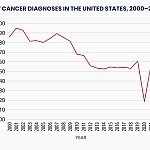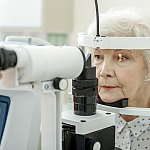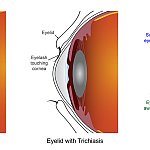
Smoking and tobacco use in the United States has declined overall, but health disparities persist, making low cost resources like quitlines crucial to help people quit smoking.
The federal government has invested millions of dollars in anti-smoking campaigns and cessation efforts. However, the new administration’s latest round of budget cuts to federal agencies could hinder decades of progress.
Earlier this month, the Department of Health and Human Services (HHS), led by Health Secretary Robert F. Kennedy Jr., gutted health groups that had been pivotal to the nation’s steady decline in smoking and vaping rates.
The Centers for Disease Control and Prevention (CDC) continues to bear the brunt of budgeting cuts. The Office on Smoking and Health (OSH), which linked contaminated vaping devices to fatal lung damage in 2019, was eliminated by the HHS.
The OSH also funds the
Gutting the OSH could limit vital resources to help people quit smoking, which experts say could lead to higher rates of tobacco use and higher costs of treatment for tobacco-related chronic disease.
HHS also recently placed dozens of staffers at the Food and Drug Administration’s
An HHS official told Healthline that Kennedy and HHS remain committed to investigating potential root causes of chronic diseases. The official said that critical programs within the CDC will continue to streamline operations and create a more efficient HHS.
The official added the CDC will continue to provide resources for those who want to quit smoking and conduct ongoing surveillance on smoking habits.
Still, federal cuts to smoking resources could impact access to free or low cost quitline programs.
According to a news release from the North American Quitline Consortium (NAQC), quitlines helped more than 175,000 people quit smoking in the past two years.
The 2024 NAQC Annual Survey of Quitlines shows that quitlines across the U.S. received more than 1.2 million calls and provided tobacco cessation resources to more than 500,000 tobacco users. Tens of thousands more relied on text messaging services accessed through their state quitlines.
Federal funding for quitlines varies by state. NAQC’s survey data show that five state and two territorial quitlines are more than 75% funded by the CDC. Another 18 states are 25% funded by the CDC.
“Every state quitline receives at least some funds from the CDC for their program,” Thomas Ylioja, PhD, MSW, president and CEO of the North American Quitline Consortium, told Healthline.
“Without continued funding, these quitlines will need to significantly cut counseling and medication services or potentially stop answering calls.”
Healthline spoke with Ylioja to learn more about how cuts to federally-funded cessation programs like quitlines could impact public health. Ylioja highlighted new, compelling statistics on smoking cessation from a forthcoming NAQC survey. Those results have not yet been published.
Ylioja: Quitlines are the backbone of smoking cessation in the country.
They are the most accessible treatments proven to help people stop smoking with free counseling and quit medications like the nicotine patch, gum or lozenge.
And they work: NAQC survey data show about 35% of people who enroll in their quitline program quit smoking for good, compared to about 7% who try to quit without help.
Ylioja: Over the past two years, NAQC’s survey data found more than 500,000 people received support with quitting from their quitline.
Quitlines are deeply embedded within the healthcare system. Many doctors refer people who smoke to the quitline for treatment because they don’t have the time or staff to deliver counseling in the clinic.
CDC OSH also runs the national
Tips has been massively successful, helping millions of people quit since it started in 2012.
Editor’s Note: An HHS official told Healthline that current
Ylioja: Without having a single recognizable program like 800-QUIT-NOW available and promoted, fewer people will be encouraged to quit, fewer people will know where to get help, and fewer people will quit.
Quitlines have been enormously successful over the past 20 years [in] helping people quit. Smoking is the leading cause of chronic diseases, including cancers, heart disease, stroke, and COPD.
In the past 10 years, an estimated 2.9 million people received counseling or medications from their state quitline.
Hundreds of thousands used state quitline web and text messaging programs. Quitlines have helped more [than] 1 million smokers quit.
Ylioja: New NAQC survey data shows 74% of quitlines offer specialized services for youth, including helping them to quit vaping or using e-cigarettes.
These programs are now at risk, which means more youth will use nicotine for longer periods.
One-third of quitline participants across the country are on Medicaid. The burden on public health insurance will go up due to the well-established higher costs of medical care for people who smoke.
Ylioja: In the past 25 years, we have made enormous progress in reducing smoking, from
Youth cigarette smoking is at its
The cuts to CDC OSH threaten to reverse the tremendous progress we have made, setting us back 10 or even 15 years.
Ultimately, these cuts will worsen and extend the epidemic of tobacco-caused chronic diseases, which continue to be [the] leading cause of disability and premature death.
Quitlines like 1-800-QUIT-NOW can help you quit smoking and vaping for good. Other quit resources include:





